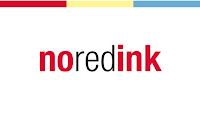This week you will be learning about How You LEARN, How You LEAD, and How You FOLLOW Directions and Process Information.
Each day you will be reviewing information about a series of survey's and learning tools that will help you learn about yourself. These tools will help you figure out in what areas you have strength's and what areas may need improvement. The KEY to this week is to remind yourself that all of these surveys are just "Snapshots" of you on the day you take them. You can change, grow, adapt, and be different based on your learning, skills, practice, attitude, emotions and reactions, and other variables each day. The results of this week should give you a better idea of how you learn, areas where your strengths are, and maybe even a little insight to a future career or skills you can use to be successful! Relax and take each day as a new learning experience, and above all try to have a little fun with these activities! All The Best! - Mr. S
Left/Right Brain Survey & Typing Test
Before we begin: "If you’ve always thought of yourself as a “numbers person” or a creative sort, the research doesn’t change anything. But it’s probably inaccurate to link these traits to one side of your brain. We still don’t know a lot about what determines individual personality; but it seems unlikely that it’s the dominance of one side of the brain or the other that matters." - "Right Brain/Left Brain, Right?" by Robert H Schnerling, MD, Harvard Health Publishing, Harvard Medical School (2017) at https://www.health.harvard.edu/blog/right-brainleft-brain-right-2017082512222
Another Point of View: "Your dominant brain type has a very significant effect on your study skills, homework habits, and grades." by Grace Fleming, ThoughtCo.com Article, (2018) at https://www.thoughtco.com/left-brain-right-brain-1857174
According to the some theories of left-brain or right-brain dominance, each side of the brain controls different types of thinking. Additionally, people are said to prefer one type of thinking over the other. For example, a person who is "left-brained" is often said to be more logical, analytical, and objective. A person who is "right-brained" is often said to be more creative or able to see the 'big-picture'. Watch the video below and take the survey. Record your answers on the Google Document you created yesterday ((❗️) DL Personal Inventory Survey Results Worksheet).
STEP 1: Watch one, or all of the Youtube Videos linked below.
STEP 2: Click the link to the Eterna Brain website and take the Brain Dominance Test (Online-Test)
There are 28 questions about your attitudes and interests. Some may be personal, but no one will see your answers. At the end of the survey you will have two (2) columns. Record the number for both Left and Right scores.
STEP 3: Open the Document from your Google Drive that you made a copy of yesterday ((❗️) DL Personal Inventory Survey Results Worksheet)
Locate the section of the Document for "L/R Brain Survey" and enter your scores. Fill in the Date of the Assessment with today's date.
Write 1-2 Sentences about what you learned today about yourself.
STEP 4: (❗️) Take the TYPING TEST at TypingTest.com (See Link Below)
In the center of your screen you will see a box with some choices (1 minute test, 3 minute test, 5 minute test) and (text, sentences, words).
Click the "More Options" link in blue below the choices. Select 1 Minute Test and choose your topic from the drop-down list.
Click "Start Typing Test". Where it says "Click or Tap Here and Start Typing!" follow the directions and start the test.
DO NOT STOP until the timer is complete. You will be typing along with the information above. Try to focus on your typing and not look at the statistics.
When the timer stops, a screen with your results will automatically appear. Record your Typing Speed, Errors, and Adjusted Speed.
STEP 5: Record your scores on the TYPING.COM 1-Minute Test section of the
Left/Right Brain Dominance Theory Links:
1. Youtube Video: "Are You Right-Brained or Left Brained?" by BuzzFeedVideo (2013)
2. Youtube Video: "What's the Difference Between the Right Brain and the Left Brain?"
by Psych2Go
3. SURVEY: (❗️) Brain Dominance Test (Online Test) - test your brain dominance - The IPN
Typing Test Links:
1. Youtube Video: "Why Learn to Type" by Typing Club
2. Youtube Video: "Why Aren't Keyboards in 'ABC' Order" by Colassal Questions
3. TYPING TEST LINK: TypingTest.com (Click Here)










